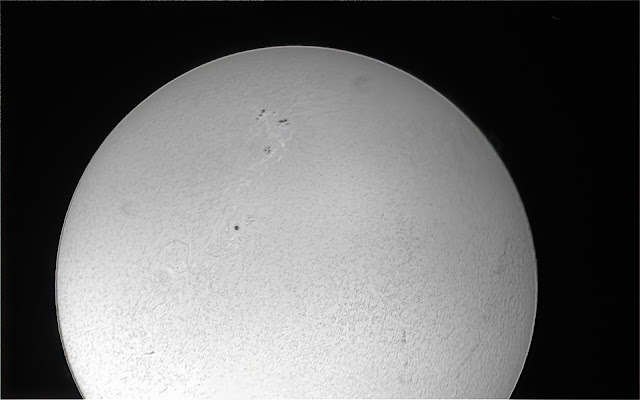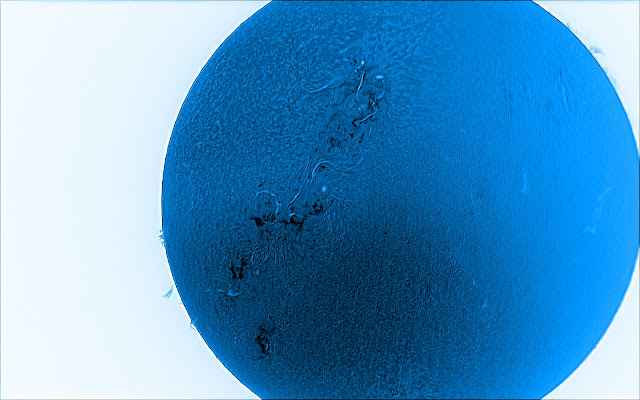Discovered by Pierre Méchain and verified by Charles Messier in 1789, the Sunflower Galaxy (or Messier
63) was one of the first galaxies in which spiral structures were identified
(by Lord Rosse, in the mid-19th century). In visible light, the
large-scale spiral structure of the galaxy is not well defined. As such, it is
classed as a flocculent (or “fluffy”) galaxy. The arms of the galaxy are
brightly illuminated by giant, blue-white stars. This highly cropped image,
taken with the RASA 8, shows the structure of the galaxy quite well. In the
wide-angle annotated image (the original from which I took the crop), the lenticular galaxy NGC 5103 is also visible in
the top, right hand corner (click to zoom in and take a closer look).
This image is a stack of 218 x 10s integrations taken with a RASA 8 and Mallincam DS10C camera. Normally, I would guide and dither when capturing, but PhD2 was not talking to the telescope mount and I had close to perfect polar alignment, so I just captured it anyway. There have been lots of discussions about dithering and whether it can be dispensed with if you have excellent alignment. In this image, that would seem to be the case, as there was no evidence of "walking noise" (a "sleet like" noise that has a consistent direction on the stacked frame due to fixed noise in the imager) on the stacked image.




.jpg)
















































